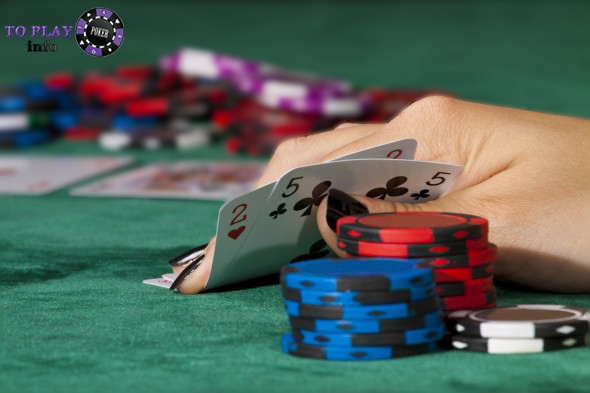Fold equity poker is a crucial concept that helps players win pots without always having the best hand. It refers to the chance that your opponent will fold when you make a bet or raise — especially in situations where they’re unsure if they can call profitably. Understanding fold equity allows you to make smarter bluffs, semi-bluffs, and pressure plays, turning marginal hands into winning ones.
Contents
- What Is Fold Equity in Poker?
- How Fold Equity Works
- When Fold Equity Is Most Valuable
- How to Calculate Fold Equity (In Simple Terms)
- Fold Equity vs Pot Equity
- Fold Equity in Bluffing and Semi-Bluffing
- Examples of Fold Equity in Action
- Common Mistakes with Fold Equity
- Final Thoughts: Mastering Fold Equity Poker
- FAQ: Fold Equity Poker for Beginners
What Is Fold Equity in Poker?
Fold equity is the potential value you gain when your opponent folds to your bet or raise. It’s not tied to the strength of your actual hand, but rather to the pressure you apply through betting. In other words, fold equity is your ability to make your opponents give up — allowing you to win the pot without a showdown.
In fold equity poker, successful players combine pot equity (chance of winning at showdown) with fold equity (chance of making opponents fold). This mix lets them make profitable plays even with weaker hands, especially when they detect hesitation or weakness in their opponents.
Fold equity becomes especially powerful in no-limit hold’em, where bet sizing and position give players more tools to force folds. By learning how and when to apply pressure, you can pick up many small and medium pots — and occasionally force big laydowns.
How This Concept Works in Practice
Fold equity works by leveraging the psychological pressure you put on opponents. When you bet or raise, especially in situations where your opponent has a marginal hand or missed a draw, there’s a real chance they will fold — even if they technically have the best hand.
This concept turns betting into a dual-purpose tool:
- You can win the pot by having the best hand at showdown (pot equity).
- Or you can win because your opponent folds — that’s your fold equity at work.
The amount of fold equity you have depends on:
- Your opponent’s range and tendencies
- Your position at the table
- Your perceived strength
- Stack sizes and pressure from the pot
For example, if you shove all-in on the river and your opponent is unsure, the risk of busting out may push them to fold. That pressure is your fold equity.
Pro Tip: Players with an aggressive image often generate more fold equity, because their opponents fear they’re holding strong hands even when they’re not.
When Fold Equity Is Most Valuable
Fold equity is most valuable when your opponent is unlikely to call a strong bet — even with a decent hand. In these situations, the threat of your aggression outweighs their confidence in their own cards.
Here are the most common spots where fold equity becomes a powerful weapon:
- On the flop or turn, when the board is scary (e.g. showing straight or flush possibilities)
- Against tight players, who prefer folding marginal hands rather than taking risks
- When you’re in position, and your bet looks stronger
- In tournaments, especially near the bubble, when players fear elimination
- When your stack is large enough to threaten their tournament life or bankroll
In fold equity poker, timing is everything. You need to recognize fear, hesitation, or weakness — and punish it with a well-timed bet or raise.
Example: You raise preflop with and c-bet a flop. Your opponent likely missed — fold equity wins you the pot.
How to Calculate Fold Equity (In Simple Terms)
In most cases, you don’t need exact math to use fold equity effectively — but it helps to understand the basic idea behind it. Fold equity adds value to your bet because there’s a chance your opponent will fold. The more likely they are to fold, the more fold equity you have.
Here’s a simple way to express it:
Fold Equity = Opponent’s Fold Chance × Pot Size
Example:
If the pot is $100 and you believe your opponent will fold 50% of the time to your $70 bet, your fold equity is:
0.50 × $100 = $50 potential profit from fold equity alone.
When combined with your regular equity (your chance of winning if called), you can evaluate whether a bluff or semi-bluff is profitable.
Note: Even an aggressive bluff can be +EV if your fold equity makes up for your lack of showdown strength.
Fold Equity vs Pot Equity
While pot equity is your mathematical chance of winning the hand at showdown, fold equity is the probability of making your opponent fold before the showdown. These two forms of equity often work together — but they serve very different purposes.
| Concept | Definition |
|---|---|
| Pot Equity | The share of the pot you expect to win if the hand goes to showdown |
| Fold Equity | The added value you get when there’s a chance your opponent will fold to a bet |
Skilled players balance both types of equity when making decisions:
- If you have strong pot equity, you can confidently bet for value.
- If you have low pot equity but high fold equity, you may consider bluffing or semi-bluffing.
- If you have both — it’s a perfect spot to apply pressure.
Summary: Fold equity helps you win pots without showdown. Pot equity helps you win when you’re called. The most profitable hands often use both.
Fold Equity in Bluffing and Semi-Bluffing

Fold equity is the foundation of successful bluffing. When you bluff, your goal is to make your opponent fold a better hand — and that’s only possible if you have fold equity in the spot.
There are two main ways to apply fold equity in practice:
- Pure bluff: You have no real chance of winning at showdown, so you rely entirely on your opponent folding.
- Semi-bluff: You have a drawing hand (like a flush draw), so you can either win by hitting your hand or by making your opponent fold.
The best bluffing spots happen when:
- Your opponent’s range is weak or capped
- The board favors your perceived range
- You have blockers to strong hands
- You’re in position and can represent strength
Pro Tip: Semi-bluffs are often more profitable than pure bluffs because they combine fold equity and pot equity.
Examples of Fold Equity in Action
Let’s look at two simple examples where fold equity plays a key role in turning a weak or drawing hand into a profitable play.
Example 1: Semi-Bluff on the Turn
You hold .
The flop comes — giving you a nut flush draw.
Your opponent checks, you bet, and they call.
The turn is . Your opponent checks again.
You bet big, applying pressure with your draw. Even if they have a pair, they might fold. If they call, you still have outs to the nuts.
Example 2: Pure Bluff on a Scary Board
You hold .
The board runs out .
You missed everything, but you represent a strong range (top pair, sets, or even straights).
A well-timed shove here can fold out weak aces or middle pairs — pure fold equity at work.
Good players don’t wait for the nuts. They recognize when their opponent is vulnerable — and they capitalize using fold equity.
Avoiding Common Mistakes When Applying Pressure
Even though fold equity is a powerful tool, many players misuse it — especially beginners who try to bluff too often or in the wrong spots. Here are the most frequent mistakes to avoid:
- Overestimating fold equity: Thinking your opponent will fold too often, especially calling stations or loose players.
- Bluffing into strong ranges: Trying to force folds when your opponent has shown strength or likely has a strong hand.
- Ignoring stack-to-pot ratio (SPR): Betting into large pots with short stacks leaves little room for fold equity.
- Misreading the board texture: Bluffing on boards that hit your opponent’s range more than yours.
- Using the same bluff sizing every time: Skilled opponents pick up on patterns and stop folding.
Fold equity works best when used selectively and logically — not as a crutch to win every hand. The key is to combine it with reads, position, bet sizing, and board analysis.
Final Thoughts: Using Pressure to Win More Pots
Understanding fold equity is a key step toward becoming a winning poker player. It allows you to take down pots without always having the best hand, and it gives your bluffs and semi-bluffs real power.
Whether you’re playing cash games or tournaments, fold equity helps you make smart, aggressive plays that pressure opponents into mistakes. The more you study player tendencies, board textures, and stack dynamics, the better you’ll become at identifying profitable spots to apply it.
Like any advanced concept, fold equity should be used with precision. Bluffing blindly won’t get you far — but when you understand when and why your opponents are likely to fold, you unlock one of poker’s most powerful tools.
Related articles:
- Semi Bluff Poker: How to Play Drawing Hands Effectively
- How to Play Suited Connectors in Poker (Ultimate Guide)
- How to Play Pocket Tens (TT) in Poker
- How to Play Ace-King (AK) in Poker
FAQ: Fold Equity Poker for Beginners
Fold equity is the value you gain from making your opponent fold. If you bet and your opponent gives up, you win the pot — that potential to win is your fold equity.
You likely have fold equity when your opponent shows weakness (like checking), has a capped range, or if you represent a stronger hand than they can beat. Position, stack sizes, and betting history also help you evaluate fold potential.
You can try — but it’s usually a losing play. If your opponent won’t fold, your bluff has no value. Successful bluffing always requires some level of fold equity.
Fold equity is important in both, but it’s especially powerful in tournaments where survival matters. Players are more likely to fold in high-pressure spots (like near the money), which increases your edge.
🎯 Ready to put your fold equity poker knowledge to the test? Try real-money poker games on trusted platforms like CoinPoker or Tigergaming Poker — play smart and make them fold!


Facebook Comments